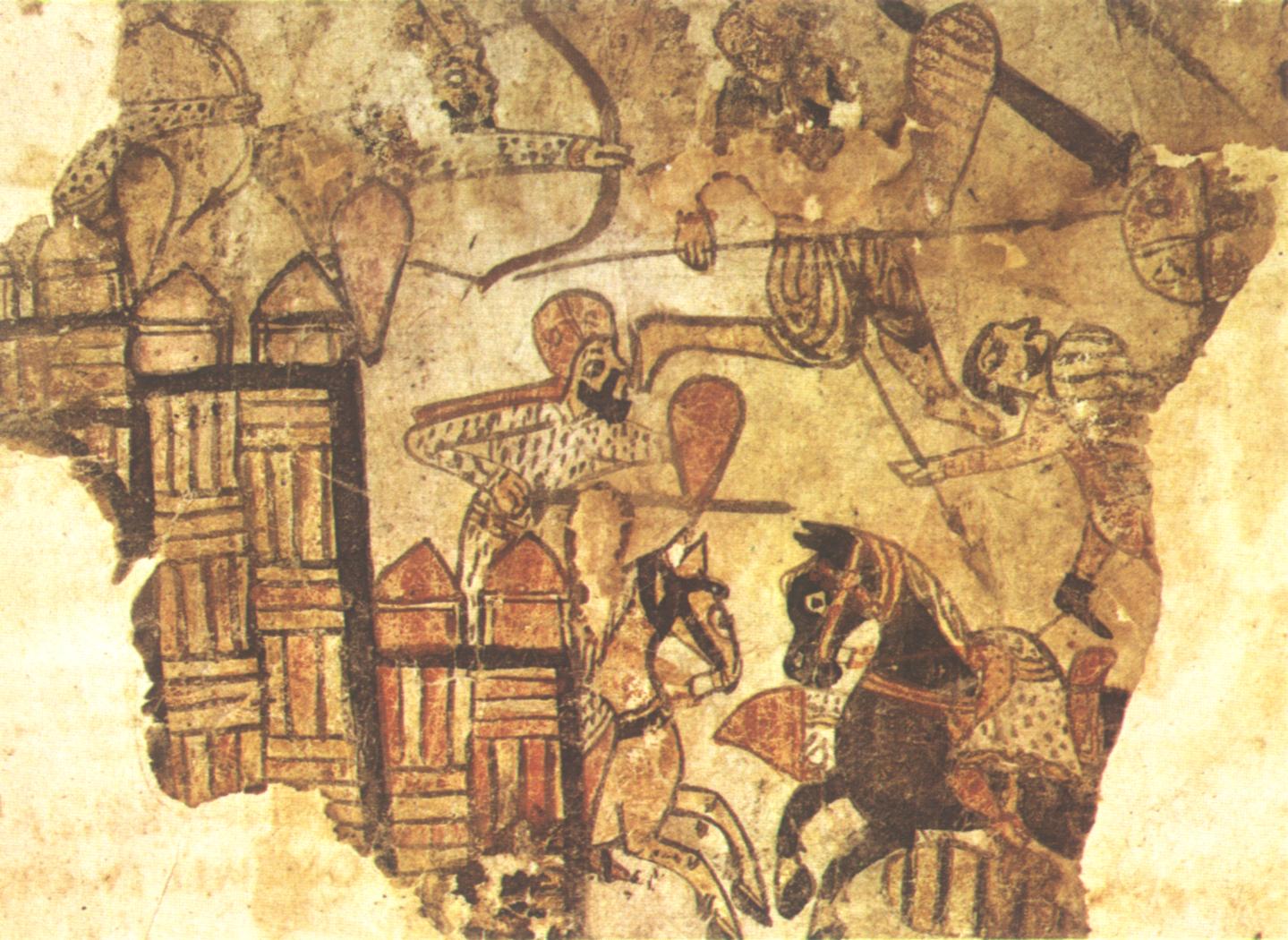
Shop Amazon - Create an Amazon Baby Registry
Fatimid Manuscript Fragment from Fustat, 12th Century



186 Painted paper fragment from Fusṭāṭ, twelfth century, showing Fāṭimid troops emerging from a fortress to engage European Crusaders. (Dept. of Oriental Antiquities, British Museum)
Source: Plate 186, p.172, David Nicolle, "An introduction to arms and warfare in classical Islam", in: Islamic Arms and Armour, ed. Robert Elgood, London 1979
Referenced on p.19 EH - 001 - Essential Histories. The Crusades. by David Nicolle.
Battle scene on a painted paper fragment, Egypt 12th century. This well-known picture was found in the ruins of Fustat and clearly shows a battle outside a fortified city or castle between the Muslim garrison and a force of Western Europeans including knights. The latter are probably Crusaders and the fortification might represent Ascalon, which the Fatimid Egyptians held against constant Crusader attack for several decades. The Muslims include a fully armoured horseman in a mail hauberk, but with a bulky turban rather than a helmet. The archers on the walls are similarly protected whereas two Muslim foot soldiers are protected only by their larger shields. The presumed Crusaders include a knight in typical and accurately illustrated 12th-century armour mail hauberk, shield, and riding an unarmoured horse. Only part of the attacking foot soldier in the top right corner survives, and he is more problematical, being equipped with a round shield, a sword and a helmet. (Department of Oriental Antiquities. British Museum, London, England.)
Referenced on p.14, God's Warriors, Knights Templar, Saracens and the Battle for Jerusalem by Helen Nicholson & David Nicolle.
Painted fragment from a mid-12th-century Egyptian manuscript showing Muslim warriors wearing full mail hauberks and turbans, supported by unarmoured infantry with large kite shields, emerging from a fortress to fight Crusaders. The Muslims are probably Fatimid troops and the fortress may represent Ascalon.
Referenced as figure 161 in The military technology of classical Islam by D Nicolle
161. Paper fragment, 12th century AD, Fāṭimid, Dept. of Oriental Antiquities, British Museum